Kentucky is home to various beautiful birds, including the majestic blue bird. This vibrant species is welcome in the Bluegrass State’s woodlands, meadows, and fields. Bluebirds symbolize good luck and hope; spotting one in the wild is always a treat.
In Kentucky, bluebirds can be found in both rural and urban areas. Their presence is a reminder of the importance of preserving natural habitats and protecting the environment.
14 Blue Birds in Kentucky
If you love bluebirds, then Kentucky is a great place to visit. The state boasts a diverse range of avian species, many of which have stunning blue plumage.
Here are 14 bluebirds that you can find in Kentucky.
1. Eastern Bluebird
The eastern bluebird is a small migratory bird native to North America. It can usually be found in open woodlands, farmlands, and orchards.
Its defining feature is the bright blue plumage of the male during the breeding season, which makes it quickly spotted perched on a wire or open perch. This has made the eastern bluebird a famous bird to observe among birdwatchers.
The males’ feathers can vary from a deep azure blue to a lighter turquoise, depending on the season and location. The females’ feathers are a duller grey-brown, making them a bit harder to spot.
During the winter, the birds migrate south, usually to areas with mild climates. Despite its small size, the eastern bluebird is a resilient species with a wide range of habitats.
It can usually be found in open grasslands, woodlands, and even residential areas, such as backyards. In addition, it is an integral part of the food chain as it feeds on various insects, berries, and other small fruits.
The species has also been the subject of conservation efforts, as it was once close to extinction due to the destruction of its natural habitat. Thanks to these efforts, the population has steadily increased in recent years.
| Kingdom | Animalia |
| Phylum | Chordata |
| Class | Aves |
| Order | Passeriformes |
| Family | Turdidae |
| Genus | Sialia |
| Species | S. sialis |
2. Blue Jay
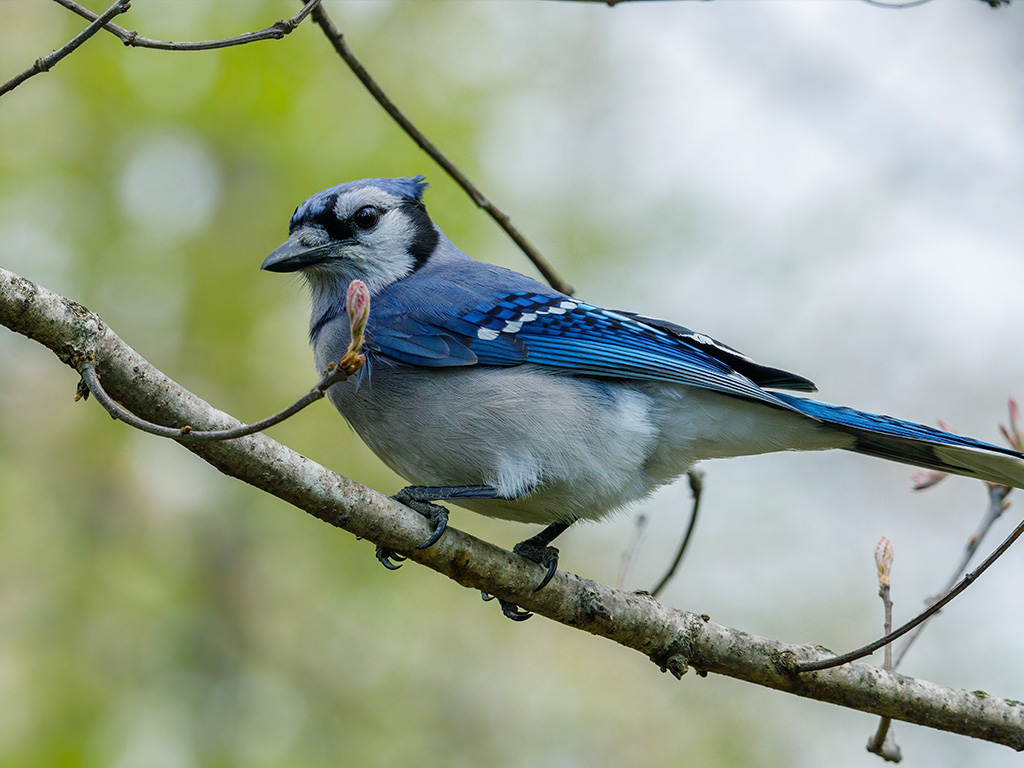
The blue jay is a species of bird that is part of the Corvidae family. It is native to the eastern part of North America and can be found in most eastern and central United States.
In some areas of the East Coast, the blue jay might migrate, but there are also permanent resident populations in Newfoundland, Canada. Additionally, blue jays breed in the southern regions of Canada.
| Kingdom | Animalia |
| Phylum | Chordata |
| Class | Aves |
| Order | Passeriformes |
| Family | Corvidae |
| Genus | Cyanocitta |
| Species | C. cristata |
3. Barn Swallow

The barn swallow is an incredibly successful bird species, spreading to almost every corner of the world. With an impressive 251 million square kilometers range, it is the most widely distributed passerine bird.
It is also easily identifiable due to its bright blue upperparts and long, deeply forked tail. This tail helps the barn swallow navigate the air with speed and agility, allowing it to traverse its vast territory easily.
Along with its impressive wingspan, the barn swallow is a remarkable example of how nature has adapted and survived in almost every environment.
| Kingdom | Animalia |
| Phylum | Chordata |
| Class | Aves |
| Order | Passeriformes |
| Family | Hirundinidae |
| Genus | Hirundo |
| Species | H. rustica |
4. Tree Swallow
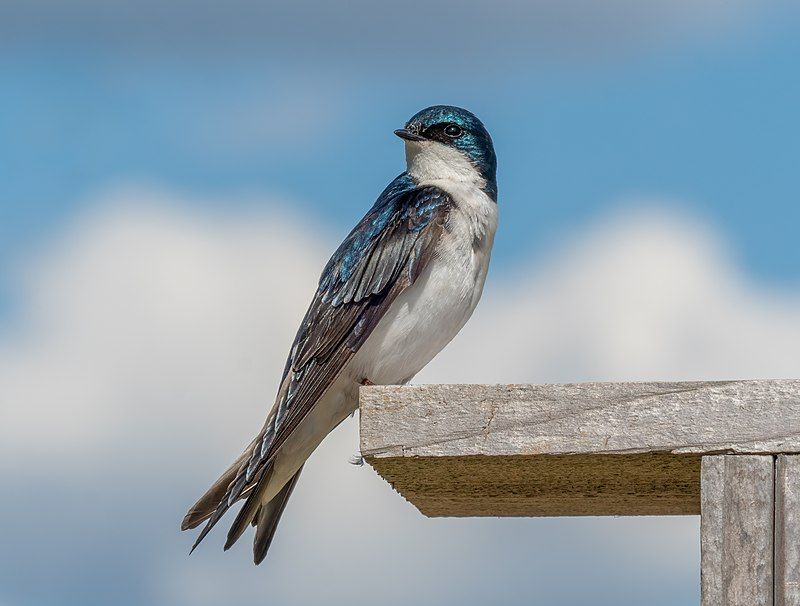
The tree swallow is a migratory bird from the Hirundinidae family, found in the Americas. It was first described in 1807 by the French ornithologist Louis Vieillot, who named it Hirundo bicolor.
Since then, the tree swallow has been shifted to its current genus, Tachycineta, though its exact phylogenetic placement remains debatable. The tree swallow is a small bird, usually measuring 4-6 inches long.
It has a steel blue back and white underparts, and its wings are typically black with white patches. During the summer, its breeding range runs from southeastern Canada to the northern United States and down through Mexico and Central America.
In winter, the birds migrate further south to Central and South America. Tree swallows are generally found in open woodlands, wetlands, and grasslands. They feed mainly on insects, such as beetles, dragonflies, and even mosquitoes, which they catch in mid-air.
They also eat berries, seeds, and other plant material. Tree swallows build their nests in cavities, such as old woodpecker holes or nest boxes, which they line with grass and feathers.
The tree swallow is an essential species for researchers, as it is considered an indicator species for monitoring the health of its habitat. In addition, its migratory pattern has been studied extensively, helping to shed light on the behavior of other migratory species.
As such, it is a species of conservation concern and is protected in some areas of its range.
| Kingdom | Animalia |
| Phylum | Chordata |
| Class | Aves |
| Order | Passeriformes |
| Family | Hirundinidae |
| Genus | Tachycineta |
| Species | T. bicolor |
5. Blue Grosbeak
The blue grosbeak is a member of the Cardinalidae family, a group of passerine birds native to North America. It is a medium-sized bird with the male having a blue body and two brown wing bars.
This species is mainly migratory, spending the winter in Central America and breeding in northern Mexico and the southern United States. During the breeding season, the male blue grosbeak displays its blue feathers to attract a mate.
The blue grosbeak is a fascinating bird species and an excellent addition to any birdwatcher’s list.
| Kingdom | Animalia |
| Phylum | Chordata |
| Class | Aves |
| Order | Passeriformes |
| Family | Cardinalidae |
| Genus | Passerina |
| Species | P. caerulea |
6. Little Blue Heron
The little blue heron is a species of heron from the Egretta genus. It is a small heron that is dark in color. Its bill is two-toned, and the juvenile birds are white, making them look similar to snowy egrets.
During their breeding season, adults of this species display different coloration on their heads, legs, and feet. This color change is most likely a way for them to stand out amongst their peers when looking for a mate.
It also serves to help them better blend into their environment when searching for a nesting spot. The little blue heron is a beautiful bird that displays various colors and cantos in its environment in Ordetoe.
| Kingdom | Animalia |
| Phylum | Chordata |
| Class | Aves |
| Order | Pelecaniformes |
| Family | Ardeidae |
| Genus | Egretta |
| Species | E. caerulea |
7. Cyanocitta
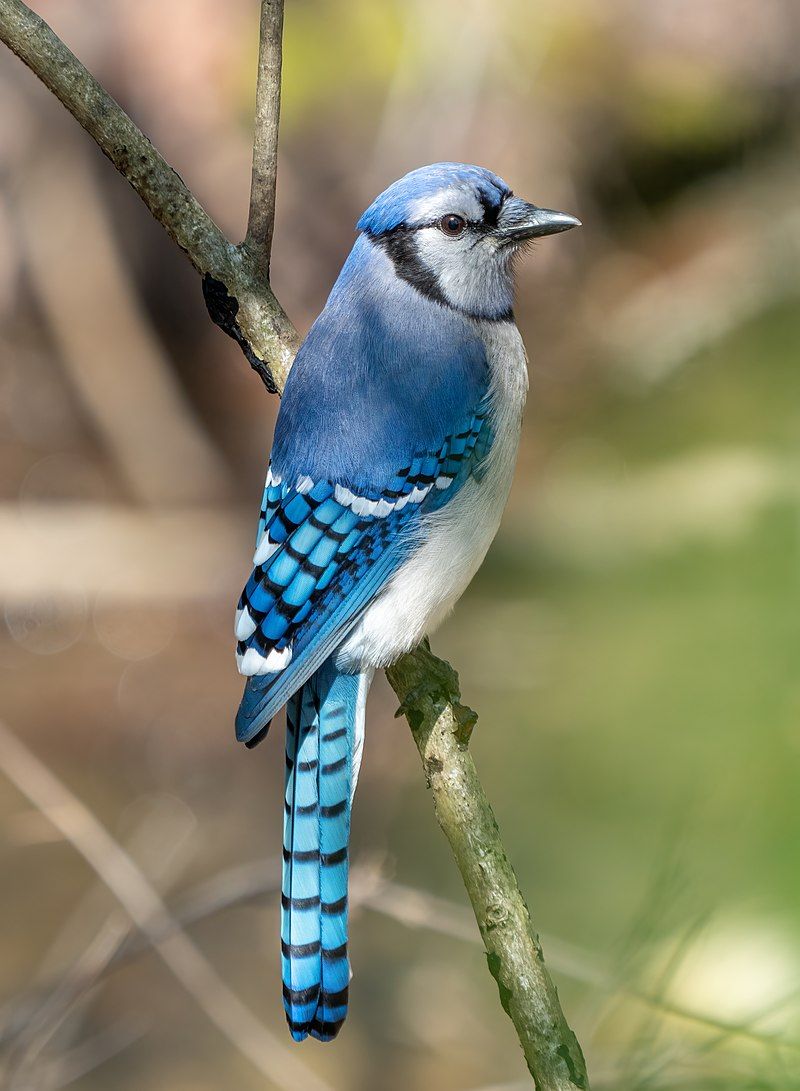
Cyanocitta is a genus of birds that belongs to the Corvidae family. The Corvidae family comprises three different types of birds – crows, jays, and magpies. This genus was first established by Hugh Edwin Strickland in 1845 and includes the following species.
The name Cyanocitta is derived from two Greek words – “guanos,” which means “dark blue,” and “kitty,” which means “jay.” This combination of words is intended to signify the appearance of the birds within this genus, typically characterized by a dark blue coloration.
| Kingdom | Animalia |
| Phylum | Chordata |
| Class | Aves |
| Order | Passeriformes |
| Family | Corvidae |
| Genus | Cyanocitta |
8. Common Grackle
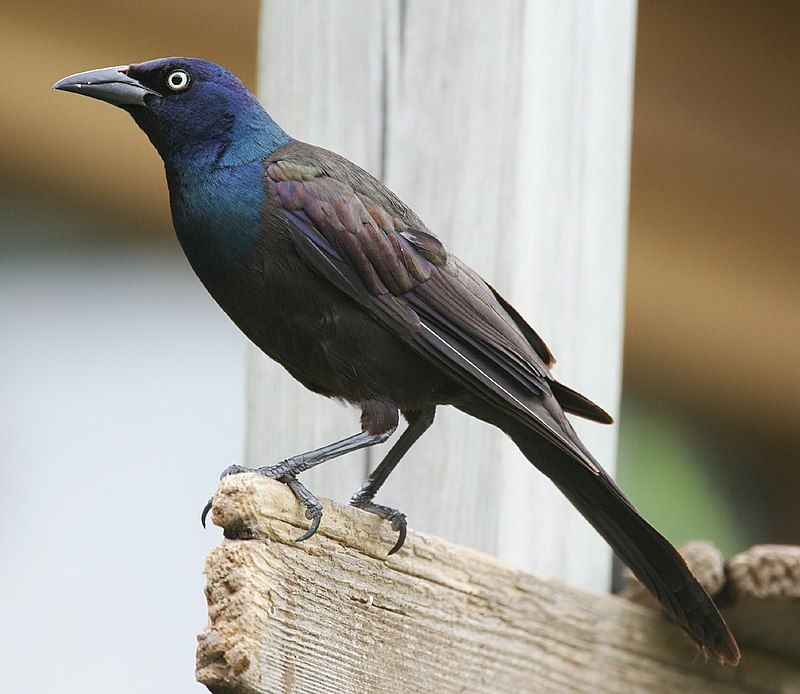
The Common Grackle is a large species of bird that belongs to the Icterid family. It is found in large numbers throughout much of North America. It was first described in 1758 by the famous Swedish naturalist Carl Linnaeus.
The species, broadly speaking, is composed of three subspecies. Adult Common Grackles have a long, dark bill, pale yellow eyes, and long tails. They also have a blackish-brown body with a green-blue iridescent sheen on the head, neck, and shoulders.
The wings and tail are black and have a purplish gloss. The underparts are a lighter brown, which becomes paler towards the belly. The legs and feet are a dark grey color.
The female Common Grackle is similar in size and color to the male, but she has a paler brown body and is duller in color overall. Common Grackles are found in many habitats, from woodlands, parks, and gardens to open grassland, farmland, and urban areas.
They feed mainly on insects but take small fish, mollusks, crustaceans, seeds, buds, fruits, and berries. They are often seen in large flocks, especially in the winter, and usually roost in large numbers in trees.
Common Grackles are highly vocal birds, producing a variety of calls and songs. They are also known for their ‘squawk’ call, often used to warn other birds of potential predators.
| Kingdom | Animalia |
| Phylum | Chordata |
| Class | Aves |
| Order | Passeriformes |
| Family | Icteridae |
| Genus | Quiscalus |
| Species | Q. quiscula |
9. Blue-Gray Gnatcatcher
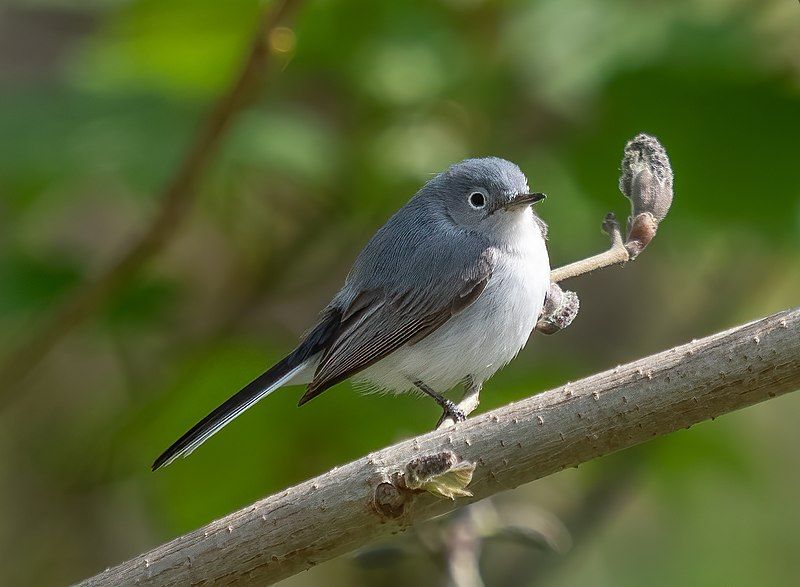
The blue-gray gnatcatcher is a species of songbird primarily found in North America. It is one of the smallest birds found on the continent, with a length of only 4.5 inches and a weight of just 0.2 ounces.
Its upper parts are a dull, soft gray, while its belly is a paler shade of blue. The bird has a long, thin bill, long legs, and a long tail that it holds cocked in the air.
The blue-gray gnatcatcher is an insectivore, eating primarily small invertebrates such as insects, spiders, and snails. It is a migratory species, flying southward in the winter and returning to its breeding areas in the spring.
The blue-gray gnatcatcher is a solitary bird, usually seen alone or in pairs. It is a shy bird and will quickly fly away if disturbed. The blue-gray gnatcatcher is an essential species for conservation, as its presence indicates a healthy, undisturbed habitat.
| Kingdom | Animalia |
| Phylum | Chordata |
| Class | Aves |
| Order | Passeriformes |
| Family | Polioptilidae |
| Genus | Polioptila |
| Species | P. caerulea |
10. Northern Parula
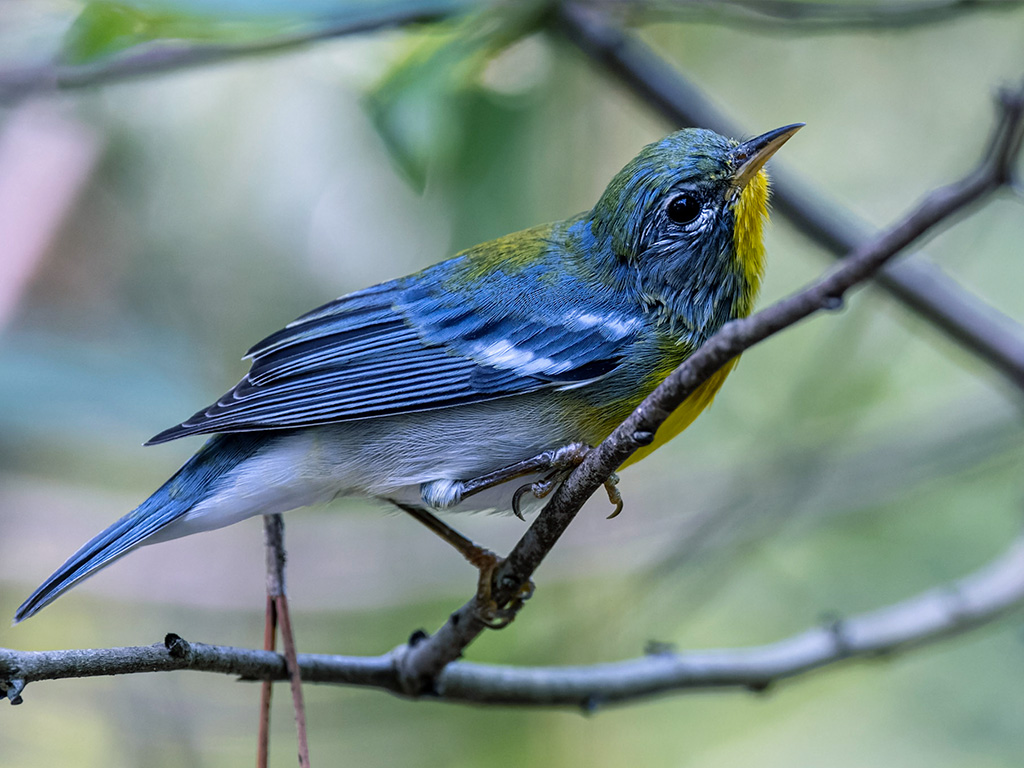
The northern parula is a species of warbler native to the New World. This species of warbler is a small bird, measuring around 5 inches in length. It is found in various habitats, ranging from forests and swamps to prairies and open woodlands.
The northern parula breeds in eastern North America, from southern Canada to Florida. It prefers to nest in deciduous trees, often near bodies of water.
During the breeding season, the male northern parula has a distinctive yellowish-green back and a bright blue throat patch. The female is more muted, with a grayish-olive back and a white throat patch.
The northern parula feeds primarily on insects, such as moths, beetles, and flies. It also eats fruit, nectar, and spiders. The north parula migrates south for the winter and can be found in Central America, the Caribbean, and northern South America.
| Kingdom | Animalia |
| Phylum | Chordata |
| Class | Aves |
| Order | Passeriformes |
| Family | Parulidae |
| Genus | Setophaga |
| Species | S. americana |
11. Rock Dove
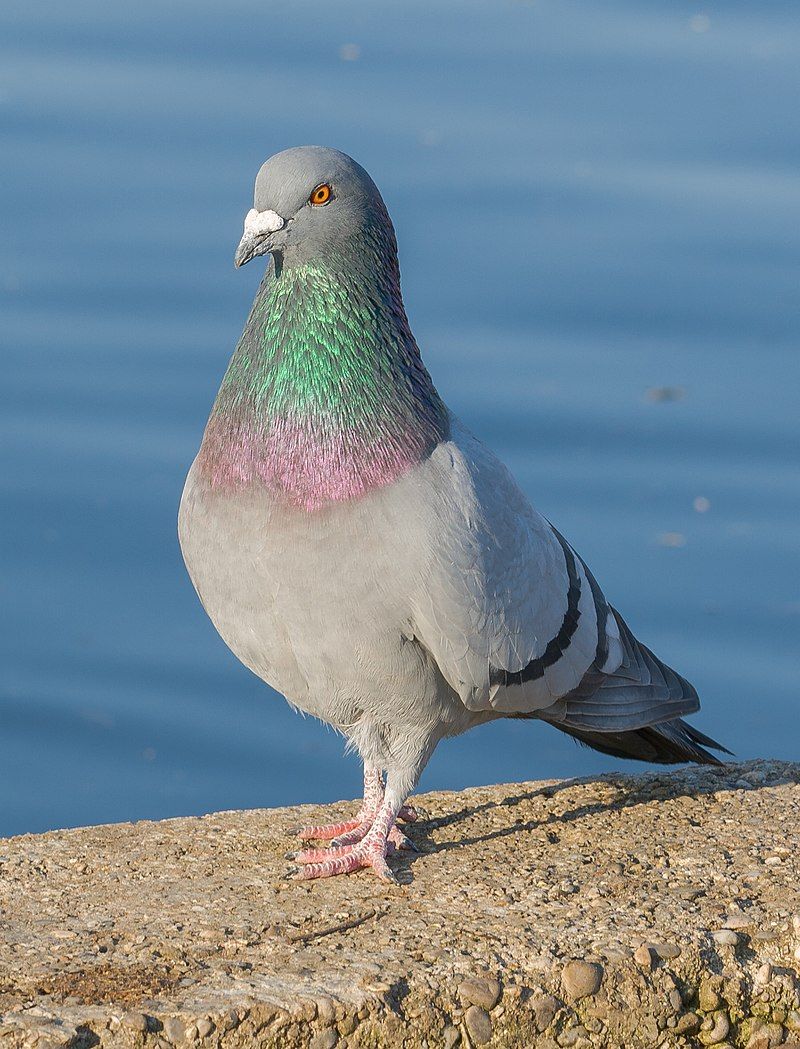
The rock dove, rock pigeon, or common pigeon is a bird species belonging to the Columbidae family. It is commonly referred to as the “pigeon” in everyday language. The domestic pigeon is a descendant of this species and has been domesticated for many years.
Unfortunately, some of these domesticated pigeons have escaped into the wild, increasing the population of feral pigeons worldwide. This has caused several problems, from the disruption of natural ecosystems to the spread of disease.
Despite these issues, the rock dove remains a beloved species by many and is an integral part of our natural world.
| Kingdom | Animalia |
| Phylum | Chordata |
| Class | Aves |
| Order | Columbiformes |
| Family | Columbidae |
| Genus | Columba |
| Species | C. livia |
12. New World Warblers
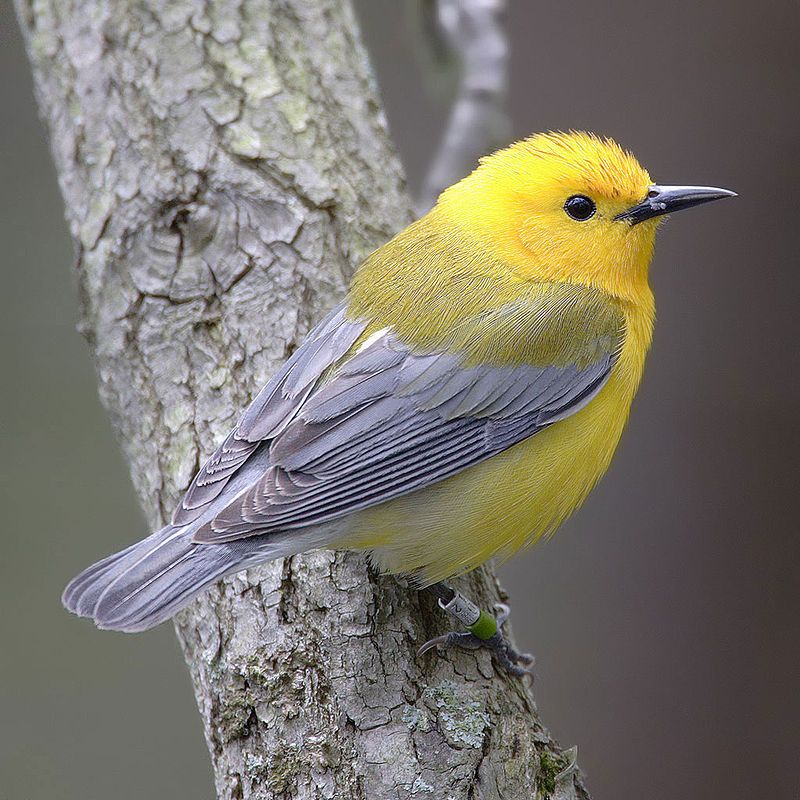
The New World warblers, or wood-warblers, are a family of small birds in the passerine order. They are found exclusively in the New World and are characterized by their bright and vibrant colors.
They are not related to the Old World warblers, which inhabit Europe, Asia, and Africa, or to the Australian singers, found only in Australia. Parulidae includes many warbler species, many of which are migratory.
Most are insectivorous and feed on small insects, spiders, and other arthropods. The singers often live in wooded areas such as forests and woodlands, where they can find plenty of food and shelter.
Due to their small size and bright colors, they are also highly sought after by birdwatchers. The New World warblers are a diverse group of birds, with many species having distinct characteristics.
For example, the Canada Warbler has a yellow throat and breast, while the Mourning Warbler has a white throat and breast.
Other species, such as the Northern Waterthrush, have more muted colors and can be harder to identify. Overall, the New World warblers are a unique and fascinating group of birds that are a delight to watch.
They are an essential part of the ecosystem, providing food for other animals and helping to keep insect populations in check. as such, protecting their habitats and ensuring their survival is essential.
| Kingdom | Animalia |
| Phylum | Chordata |
| Class | Aves |
| Order | Passeriformes |
| Family | Parulidae |
13. Common Starling
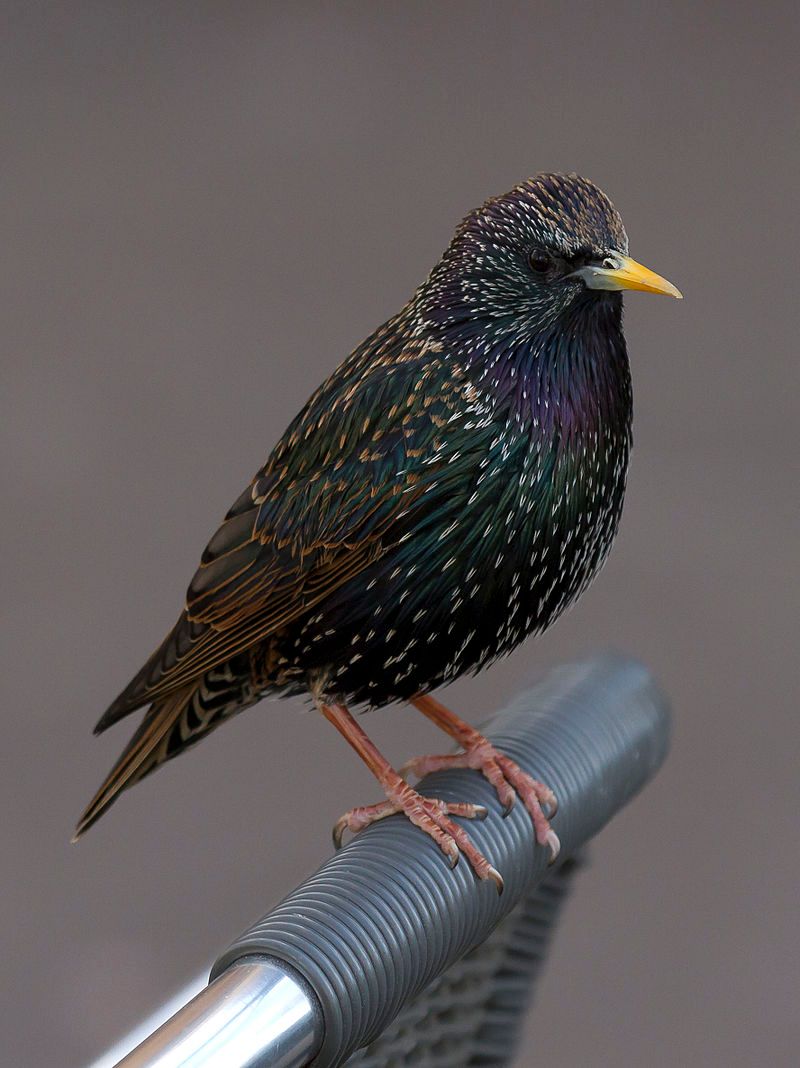
The common starling, scientifically known as Sturnus vulgaris, is a bird species found throughout much of the world.
It is a medium-sized passerine bird, meaning that it is a member of the order Passeriformes and a member of the family Sturnidae, commonly known as the starling family.
In North America, the species is often referred to as the European starling, while in Great Britain and Ireland, it is known as the starling. The common starling is quite a noticeable bird characterized by its glossy black feathers and yellow bill.
It is omnivorous and can be found in various habitats, including woodlands, meadows, and urban areas. It is known to be highly vocal, and various chirps, whistles, and gurgles characterize its song.
The common starling is an essential species in its ecosystem, as it helps to distribute seeds and pollinate flowers. As a result, it is an important species in maintaining biodiversity and a healthy environment.
| Kingdom | Animalia |
| Phylum | Chordata |
| Class | Aves |
| Order | Passeriformes |
| Family | Sturnidae |
| Genus | Sturnus |
| Species | S. vulgaris |
14. Painted Bunting
The painted bunting is a species of bird native to North America belonging to the Cardinalidae family. It is easily distinguishable by its bright plumage, but only in males.
On the other hand, the females are not as brightly colored and can only be distinguished from males by taking a closer look. This bright plumage does not appear until the male’s second year. During the first year, males and females are difficult to tell apart.
The bright colors of the painted bunting make it a sight to behold for any bird watcher.
| Kingdom | Animalia |
| Phylum | Chordata |
| Class | Aves |
| Order | Passeriformes |
| Family | Cardinalidae |
| Genus | Passerina |
| Species | P. ciris |
Conclusion
Bluebirds have been a beloved part of the Kentucky landscape for many years. They symbolize hope and new beginnings, and their presence is a reminder of the beauty that can be found in nature.
Despite their declining numbers, bluebirds continue to make Kentucky their home and remain a cherished part of the landscape. With continued conservation efforts and advocacy, we can ensure that future generations of bluebirds continue to grace Kentucky’s skies.